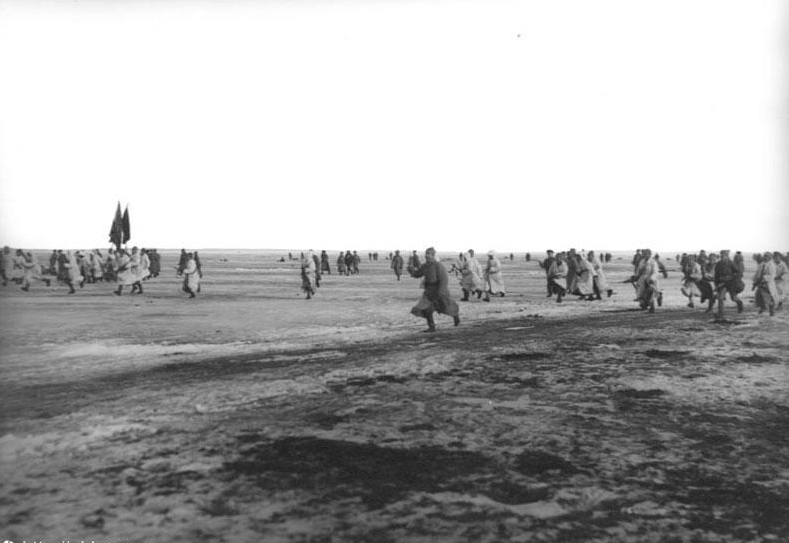Kronstadt Rebellion Begins (1921)
Tue Mar 01, 1921

Image: Soldiers of the Red Army attack the island fortress of Kronstadt on the ice of the Gulf of Finland. Sometime between March 6th and March 18th, 1921 [Wikipedia]
On this day in 1921, ~15,000 people assembled in Kronstadt, demanding election reforms, an end to censorship, and the allowance of individual production, marking the beginning of the Kronstadt Rebellion against the nascent Bolshevik government.
The uprising consisted of sailors, soldiers, and civilians from a variety of political persuasions, including anti-communist reactionaries and anarchists. The uprising was also the last major revolt against the Bolsheviks on Russian territory during the civil war.
The Kronstadt Rebellion took place in the context of a difficult winter in which fuel and food became scarce. Protests and civil unrest were happening throughout Russia, and sailors in Kronstadt had deposed their commander Raskolnikov in weeks earlier, in late January.
On February 28th, in reaction to government suppression of protests in Petrograd, the sailors drafted a set of fifteen demands, including free elections, freedom of assembly for peasant and labor organizations, to abolish the Bolshevik fighting detachments in all army branches, and to allow peasants full control of their land, provided they don’t employ others.
On March 2nd, a Provisional Revolutionary Committee was formed, demanding a “third revolution” to restore the revolutionary values Kronstadt supporters felt the Bolsheviks had betrayed. The Bolsheviks accused Kronstadt rebels of being counter-revolutionary and petty bourgeois in character, moving to crush the rebellion by force.
On March 7th, the Red Army began attacking the island with small land forces and aerial bombardment, however little progress was made at first. On March 16th, a Bolshevik force of 50,000 met and defeated the 15,000 rebels, seizing control of the island.
8,000 Kronstadt refugees crossed into Finland within a day of Kronstadt’s fall, sabotaging the defenses as they left. Casualty estimates vary widely, but thousands of soldiers were killed on either side.
The political character of the uprising is seriously contested, and the insurrection has been memorialized by critics of the Soviet Union, from figures such as anarchist Emma Goldman to Boris Yeltsin, the corrupt, anti-communist first President of the Russian Federation. In 1994, Yeltsin rehabilitated the rebels and created a memorial for them in Kronstadt.
Anarchists tend to view the Kronstadt Rebellion as a righteous uprising against an increasingly repressive Soviet state, while Marxist-Leninists generally regard it as counter-revolutionary and petty bourgeois in character.
For his part, Vladimir Lenin regarded the episode as a critical challenge to the revolution, calling Kronstadt “undoubtedly more dangerous than Denikin, Yudenich, and Kolchak combined”.
In 1970, anarchist historian Paul Avrich published a seminal and thorough history of the uprising in English, titled “Kronstadt, 1921”.
- Date: 1921-03-01
- Learn More: en.wikipedia.org, libcom.org, www.marxists.org, theanarchistlibrary.org, www.marxists.org.
- Tags: #Communism, #Labor, #Marxism, #Anarchism, #Protests.
- Source: www.apeoplescalendar.org


Pretty significant that the initial revolution also began with the mutiny in Kronstadt.
In retrospective Kronstadt was the warrant canary of the revolution. They kind of began the whole thing so it was a strong sign that they revolted again for a last time after the revolution.